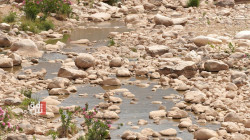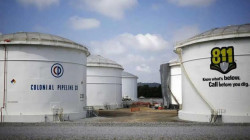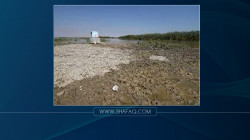Fourteen Iraqi cities sizzle as global heatwave peaks

Shafaq News/ A heatwave has engulfed Iraq, with 14 cities topping global temperature charts on Friday, according to data released by California-based weather station Placerville.
Nasriyah, located in southern Iraq, claimed the notorious distinction of being the world's hottest city with a scorching 48.4 degrees Celsius (119.12 Fahrenheit). Close behind were Karbala -which is hosting al-Arbaeen; the world's largest religious gathering- at 48.2 degrees Celsius and al-Heet, in western Iraq, at 48 degrees Celsius.
Other Iraqi cities that made the top 15 list include Samawa, al-Ramadi, Najaf, Nukhaib, al-Hillah, al-Azizyah, Baghdad Airport, Ain Tamr, al-Husayn neighborhood in Basrah, al-Diwaniyah, and al-Khalis. Al-Ula in Saudi Arabia rounded out the list at 46.7 degrees Celsius.
Iraq is the fifth most vulnerable country in the world to climate change and is the most vulnerable country to changes in climate in the Middle East and North Africa region. Temperature increase and water scarcity are both affecting Iraq’s economic and social stability. Over the past four decades, average temperatures in the country increased by over 2.5 degrees Celsius. By 2050, Iraq is expected to be the ‘hottest’ country in the region, with average temperature exceeding thirty-six degrees Celsius, followed by Kuwait, Egypt and Libya. Increased temperatures are expected to severely affect labor productivity in Iraq, with the agriculture and construction sectors being the most affected. Thirty-five percent of Iraq’s labor force in the agriculture and construction sectors are facing extreme heat conditions with temperatures exceeding fifty degrees Celsius.
At the same time, growing water scarcity and more frequent extreme weather events have increasingly affected socio-economic conditions in Iraq through the exacerbation of electricity shortages and reduction of economic output in various sectors of the economy, including the agriculture sector. Based on World Bank predictions, the widening gap between water supply and demand is expected to increase from around five billion to eleven billion cubic meters by 2035. Water scarcity and low water quality can significantly reduce crop yields and affect agri-food systems, threatening food security and adversely impacting the country’s GDP.
Iraq also has one of the highest levels of carbon intensity (emissions by GDP) in the region. Most of the country’s total carbon emissions are attributed to the energy sector (electricity, oil, and gas operations and transport). Annual CO2 emissions in Iraq have more than doubled over the past decade, reaching 185 million tons by the end of 2021, compared to 61 million tons in 2007.





